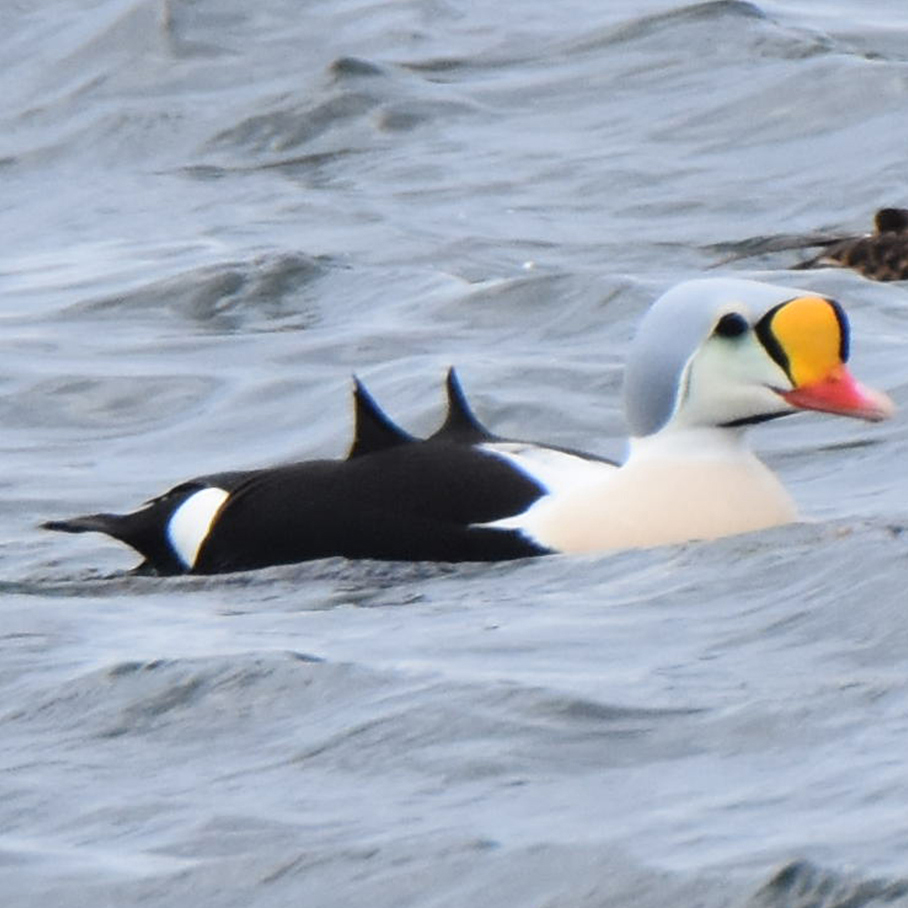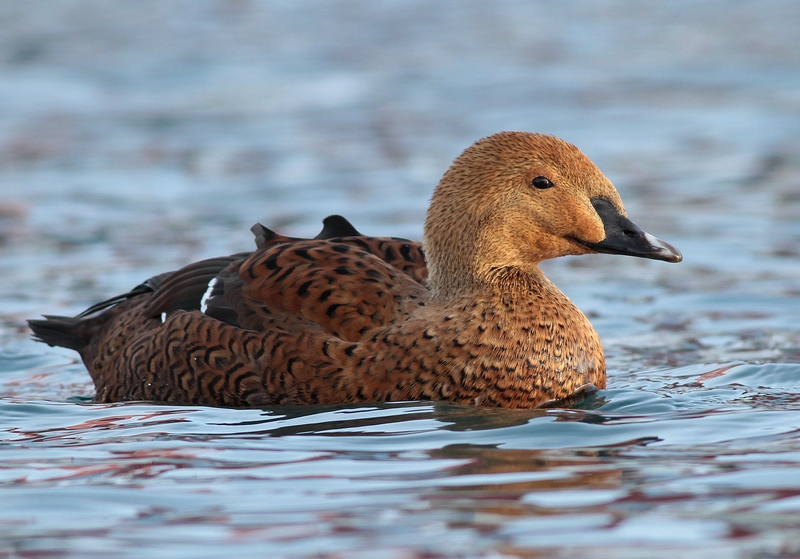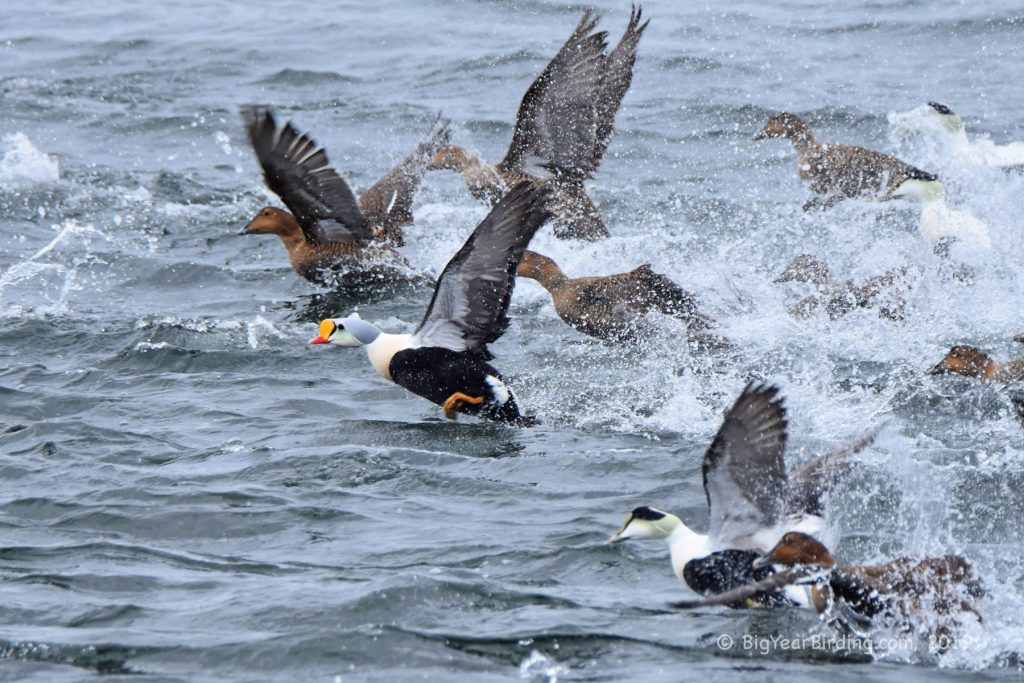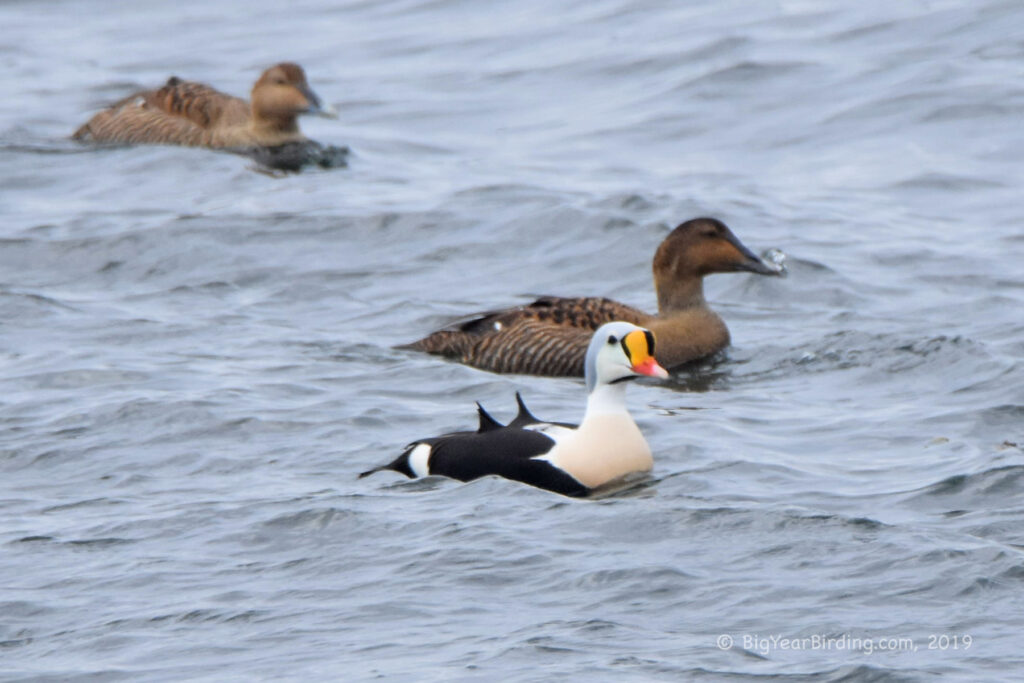
The King Eider is a species of sea duck that is found in the Northern Hemisphere, specifically in Arctic and sub-Arctic regions. This duck is a medium to large sized bird with a length of 18-24 inches and a wingspan of 33-38 inches. The male and female King Eider have different coloration, with the male sporting a black body, white back and neck, and a bright orange bill, while the female has a mottled brown body and a duller bill.

One of the most distinguishing field marks of the King Eider is the male’s vibrant, almost neon-orange bill, which stands out even from a distance. Additionally, the male’s white back and neck make it easy to identify in the field, while the female’s mottled brown body allows it to blend in with its surroundings. Both sexes have a distinctive “smiling” appearance, with the upper part of their bills curving upwards.
King Eiders are known for their extensive migrations. They breed in the Arctic tundra, and during the winter they can be found along the coastlines of the North Pacific, North Atlantic, and Arctic oceans. They have been known to travel as far south as the Great Lakes region in North America during their migrations. In the spring, the King Eiders return to their breeding grounds in the Arctic.
In terms of weight, the King Eider is a relatively heavy bird, with males weighing in at 2-3.5 pounds and females weighing 1.5-2.5 pounds. This weight, combined with their powerful wings, enables them to fly long distances during their migrations. Despite their size, King Eiders are excellent swimmers and divers, using their wings to “fly” through the water and their strong legs to propel themselves underwater.

Overall, the King Eider is a fascinating bird with striking field marks and impressive abilities. Its extensive migrations take it across vast distances, and its unique appearance makes it a favorite among birdwatchers and wildlife enthusiasts alike.

